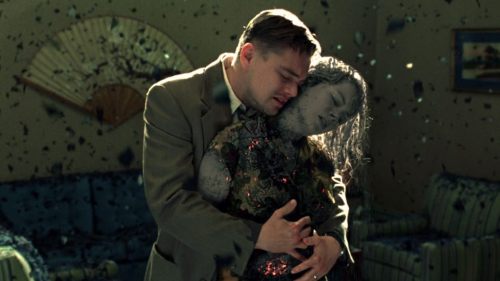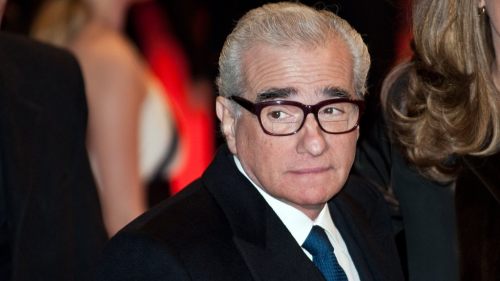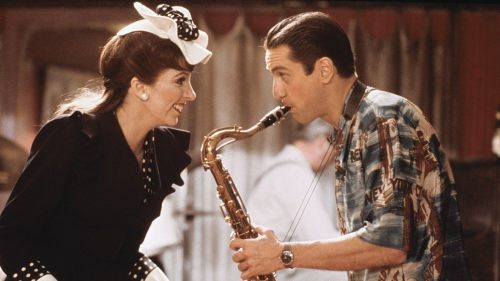Scorsese’s Two SHUTTER ISLAND Movies
“Minor Scorsese” is a phrase we trot out every few years. When we’re blessed with consistent output from The Greatest Living Director, we get a little greedy, take some stuff for granted. So critics tend to pin their best-of-year hopes and dreams on certain "prestigious" Scorsese titles - Age Of Innocence, The Aviator, Gangs Of New York - and are happy to fling around the “minor Scorsese” label for others. King Of Comedy was saddled with this tag upon release, as was Cape Fear and today’s topic, Shutter Island.
Shutter Island is at its heart a pulpy genre picture - that’s important, as people tend to forget that, for all the pomp and circumstance afforded his prestige pics, Scorsese lives and breathes genre. He loves all film, and has stuck his toes in just about every kind of filmmaking you can imagine, but the man loves genre, and Shutter Island’s DNA contains a gnarly family tree comprised of genetic material from The Cabinet Of Dr. Caligari, The Ninth Configuration and Shock Corridor. Its lineage aside, Scorsese says he was attracted to Shutter Island because it’s, in a strange way, two movies - or at the very least, two experiences. It’s one story the first time you watch it, and it’s quite another story the second time you watch it. That’s an exciting prospect for a filmmaker, and Scorsese’s delight in this exercise is only fully revealed on a second viewing. The sad part about this is that the post-Sixth Sense audience who “guessed the ending” (as if that were the point) dismissed the thing with the dreaded “minor Scorsese” label, and deprived themselves of the second half of a unique experience the director created for them. And I’m not sure that in 2015, we’re in any position to be turning down unique experiences that Scorsese has created for us. "Minor Scorsese" often beats Major Whoever-Else-You-Got.
Our first viewing of Shutter Island is from the POV of Teddy Daniels (Leonardo DiCaprio), as a federal agent delving into a mystery: a woman has inexplicably gone missing from The Ashecliffe Asylum For The Criminally Insane. As Teddy arrives on the island, with armed guards eyeballing him suspiciously, doctors whispering around every corner, and patients passing him secret notes, it’s clear that the patients and staff are hiding something from him. Everyone’s on edge and acting strange. The sense of something being “off” is enhanced by process shots that don’t seem to care if you know they’re process shots, and Scorsese and editor Thelma Schoonmaker’s deliberately mismatched cuts. You, the protagonist, know something isn’t adding up. You, the audience, also know something isn't adding up; Scorsese isn’t trying to fool you. It’s all laid out for you from the beginning; how you perceive it is, in a very real sense, your choice. That’s important for later.
With his new partner Chuck (Mark Ruffalo) accompanying him, Teddy digs deeper and deeper into the mystery of Ashecliffe, crossing paths with shady guards, paranoid inmates and a bemused warden who, at one point, point-blank threatens to murder him with his bare hands. Eventually, we and Teddy come to find out why everyone is acting so strangely toward him - the entire hospital is engaged in a kind of role-play psychodrama. You see, Teddy is not Teddy; he’s violent inmate Andrew Laeddis, whose mind has snapped after causing (directly and indirectly, respectively) the death of his wife and children. His partner is not his partner; he’s his psychiatrist Dr. Sheehan. The whole charade is the plan of Dr. Cawley (Ben Kingsley), meant to give violent inmate Andrew Laeddis one last shot at returning to reason before he’s lobotomized.
Before we get to what happens next, let’s talk about Scorsese’s attraction to the “two stories in one” angle. Watching Shutter Island again from the beginning, nearly every action, every glance, takes on a new meaning. When Andrew-As-Teddy arrives at the island, he’s not "meeting the staff"; they’re surrounding him, practically pointing their rifles at them, because he’s a dangerous lunatic. When Teddy's partner “Chuck” is told to surrender his gun to the guards, he doesn’t even know how to remove it from its holster, clumsily taking the whole thing off his belt to hand it over. Everyone is hiding something from Teddy, but not really trying (or able) to hide it from us. When Teddy/Andrew ditches Chuck/Dr. Sheehan for five minutes, another inmate (Jackie Earle Haley) flat-out tells him - and us - the entire plan. This is an elaborate masquerade that’s perilously hanging by a thread since the word go. Viewers might guess the “twist” on first viewing, but it’s there in plain sight from the outset; it’s not really the point; and a second viewing reveals just how much it’s up to you to choose to see or not see the reality.
Which is what Andrew has done. Presented with a choice, Andrew Laeddis chooses madness. Madness is easier than guilt. Madness doesn’t hurt like clarity. And when his madness is taken away, oblivion is an even better alternative. “Which is worse? To live as a monster or to die a good man?” Laeddis asks Dr. Sheehan, before walking voluntarily toward his own lobotomy (which he catalyzes by pretending to remain delusional). Snapped out of his fantasy, Andrew chooses the operating table, the system’s last-resort deterrent offering him blessed, eternal release. His decision fuels the real twist of Shutter Island: that Scorsese and author Dennis Lehane manage to give a new, emotional weight to a hoary old bit of cinematic gimmickry. The unreliable narrator is just trying to protect himself from his own truth, and when the curtain is pulled back, his truth is so terrible that he chooses living death.



